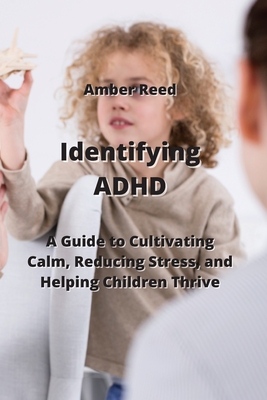You are here
Back to topIdentifying ADHD: A Guide to Cultivating Calm, Reducing Stress, and Helping Children Thrive (Paperback)
Description
Identifying ADHD (Attention-Deficit/Hyperactivity Disorder) is a crucial step in providing appropriate support and intervention for individuals affected by this neurodevelopmental condition. ADHD is a common mental health disorder that affects both children and adults, causing challenges in attention, hyperactivity, and impulsivity. This comprehensive guide aims to shed light on the signs, symptoms, and assessment methods that can help recognize ADHD in individuals.
ADHD manifests differently in different age groups, making early identification essential for timely intervention. In children, ADHD symptoms often become noticeable during early school years when academic demands increase. Common signs include difficulty sustaining attention, forgetfulness, frequent daydreaming, trouble following instructions, impulsivity, and restlessness. Identifying these symptoms early on allows parents, teachers, and caregivers to seek appropriate professional evaluation and support.
For adolescents, ADHD symptoms may present differently due to hormonal changes and increased responsibilities. Inattention might manifest as poor time management, disorganization, and difficulty completing tasks. Hyperactivity may transform into a sense of internal restlessness or excessive talking. Adolescents with undiagnosed ADHD may experience academic challenges, leading to low self-esteem and heightened frustration.
In adults, ADHD symptoms may persist from childhood or emerge later in life. Identifying ADHD in adults can be more challenging as the symptoms may be mistaken for stress, anxiety, or other mental health conditions. Adults with ADHD may struggle with focus, impulsivity, and time management in both personal and professional settings. Difficulty maintaining relationships and a sense of chronic disorganization are also common challenges.
Diagnosing ADHD typically involves a comprehensive assessment by qualified healthcare professionals, including psychiatrists, psychologists, or pediatricians. The evaluation process includes a thorough review of the individual's medical and developmental history, symptom observation, and input from teachers, parents, or partners.
The process of identifying ADHD may also include standardized rating scales and questionnaires to assess the severity of symptoms. Identifying other potential coexisting conditions, such as learning disabilities or anxiety, is essential for developing a holistic treatment plan.
It is crucial to recognize that ADHD is a neurodevelopmental disorder and not a result of parenting styles or lack of discipline. Early identification and understanding the unique strengths and challenges of individuals with ADHD can help them thrive in academic, social, and professional environments.
Once identified, support for individuals with ADHD may include behavioral therapy, educational accommodations, and, in some cases, medication. Creating an inclusive and supportive environment at home, school, and work can significantly improve the quality of life for those with ADHD.
In conclusion, identifying ADHD is the first step toward providing the necessary support and interventions for individuals affected by this condition. By recognizing the signs and seeking professional assessment, we can create a more understanding and accommodating society, empowering individuals with ADHD to achieve their full potential.

